Most personal trainers are a waste of money.
End of story.
Their hearts can be in the right place, but the truth is that most just don’t have the drive or know-how to get people into great shape.
(And let’s be clear–getting people into great shape is the purpose, not simply running them through workouts for their own sake.)
Look around any gym and you’ll see what I’m talking about.
Trainers charging people $50 to 75 per hour to watch them do the same type of silly, ineffective workout routines found in fitness magazines (usually with poor form to boot).
You’ll notice that not much changes with their clients, either.
There they are day after day, paying and sweating, with nothing to show for it.
You’ve probably also noticed that many trainers aren’t even in good shape themselves.
How can you honestly sell yourself as a fitness expert when you’re a skinny-fat weakling? Who could possibly believe you?
Compounding the disservice is the fact that most trainers don’t give their clients proper diet plans, which is basically the kiss of death.
When it comes to building muscle and losing fat, you just can’t out-exercise a bad diet.
- Eat wrong and you’ll stay fat no matter how much cardio you do.
- Eat wrong and you’ll stay skinny and weak no matter how much effort you pour into your “muscle building workouts.”
- Eat right, however, and you can go far: rapid, long-term fat loss and muscle growth that will turn heads and get your friends and family talking.
And fortunately, eating correctly requires little more than following simple, flexible nutritional targets that allow you to eat foods you like while building muscle and losing fat.
But that’s another discussion for another article.
In this article, I want to focus on personal trainers and how to find one that can actually help you achieve your goals.
Let’s start with a question that is probably on your mind…
Table of Contents
+
Why Do So Many Trainers Get Such Poor Results?
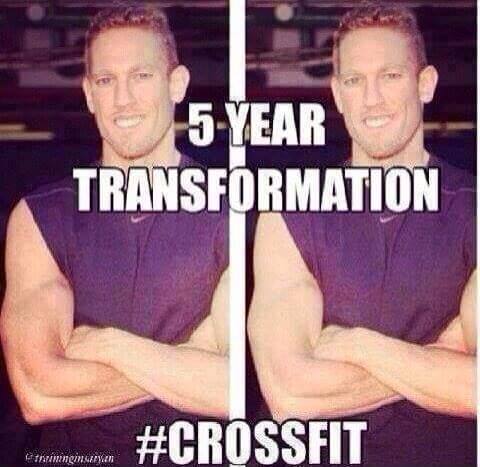
The unfortunate truth is having a PT license doesn’t mean you can get the type of results that people will pay for.
It means you were able to memorize and regurgitate some basic information about nutrition, anatomy, and exercise. You can even do it all online, where answers are just a Google search away.
The upshot is someone who is a “certified professional” that has spent a lot of time with defective textbooks and little to no time at the coalface.
Trainers also have to struggle with a simple dilemma: justifying their expense.
That is, to keep the wolf from the door, they have to keep their clients convinced that they’re needed.
While some people are happy to pay a trainer just to force them to show up every day, most want to feel like they’re getting more for their money.
And the easiest way to create that perception is to regularly change up workout routines and talk about “sophisticated” diet and workout principles.
The problem is the more you wander from the fundamentals, the less progress you make.
For example…
- “Muscle confusion” is a myth.
- “Clean eating” guarantees little in the way of muscle growth or fat loss.
- Low-carb dieting won’t help you lose fat faster.
- Focusing on fancy rep schemes like supersets, drop sets, giant sets, etc. isn’t optimal for natural weightlifters.
- Combing cardio and weightlifting isn’t optimal for maximizing strength and muscle gain.
The bottom line is that when all is said and done, a large percentage of personal training clients waste thousands of dollars to make mediocre (or worse) gains and then quit out of disappointment.
I’ve worked with thousands of people and seen it more times than I could hope to count.
It’s not all gloom and doom, though.
There absolutely are great trainers out there who are in awesome shape themselves, who know how to quickly and effectively get results in others, and who truly care about their clients and delivering on their promises.
If you’re one of them, I applaud you, because you’re carrying the weight of the entire profession on your shoulders.
So, if that’s the lay of the land, how do you go about finding a good trainer to work with?
The following questions will help.
5 Questions to Ask Before Hiring a Trainer
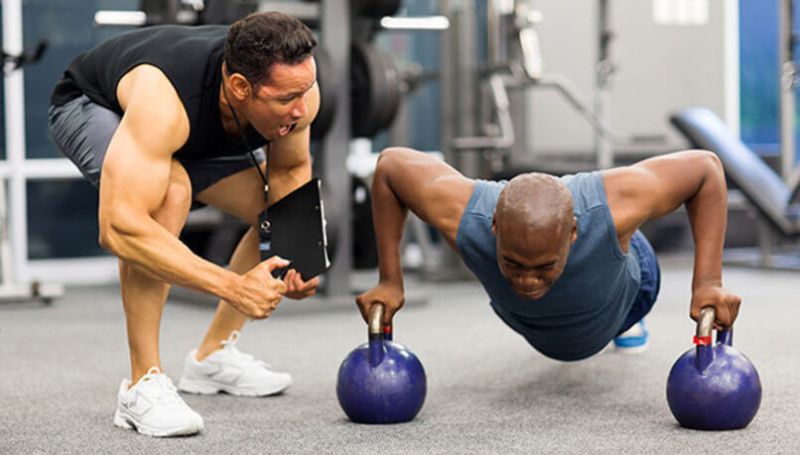
Don’t hire a trainer based on first impressions alone.
Just because he (or she) has the type of physique that you want doesn’t mean that he has a system that can get you there, too.
Just because he sounds knowledgeable doesn’t mean he has the right knowledge.
And just because he has a gaggle of clients doesn’t mean they’re getting their money’s worth.
Think of your first meeting with a trainer like a first date.
You know…the adult game of stranger danger.
Your goal is to discover, as quickly as possible, if this person is worth your time and money or if you should keep your toys to yourself.
You do this by asking the right questions…
1. How Quickly Will I See Results?

You know those crazy transformations you see all over social media and the Internet?
The ones where guys and gals go from beanpole or blubber-belly to statuesque fitness model in just a few months?
They’re bullshit.
What you’re actually seeing is often the result of…
Extensive training history that allowed for rapid re-gain of muscle.
“Muscle memory” is very real, which means it takes far less time to regain muscle than it takes to gain it the first time around.
Anabolic steroids and fat loss drugs.
Many people are surprised to learn just how rampant drug use is in this space.
Gear is everywhere, from fitness models and competitors to personal trainers to “gurus” and even everyday gymgoers.
Many people are also surprised how powerful the right cocktail of drugs actually is.
When used properly (not necessarily safely, mind you, but effectively), steroids and cutting drugs can enable someone to do in 3 months what would normally take a year or longer.
A good example of this is the bodybuilder Boston Lloyd’s transformation:
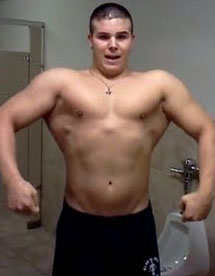
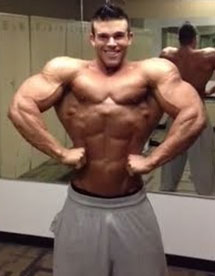
As you can see, he gained about 30 pounds of muscle and got absolutely shredded.
Here’s the kicker, though: he did it in just under a year. (And admitted to using a lot of drugs to make it happen.)
Now, that isn’t to say that all impressive transformations are frauds.
Anyone can dramatically transform their body naturally…but it takes time.
For instance, research shows that the most natural muscle growth you can hope for in your first year of weightlifting is about 20 to 25 pounds if you’re a man and about half that if you’re a woman.
Those are “best case scenario” numbers, too, that presuppose several things:
- You follow your diet strictly.
- You miss very few workouts.
- Your body responds well to weightlifting (some don’t).
- You don’t spend much of that first year in a calorie deficit (which slows down muscle growth).
Now, the reason I’m telling you all of this is simple:
You should ask your would-be trainer what type of results you can expect if you work with him…and listen carefully.
Generally speaking, here’s the type of answer you want to hear:
- You can lose 1 to 2 pounds of fat per week if you’re cutting.
Unless you’re very overweight, you’re not going to be able to lose more than this without taking extreme (unhealthy) measures.
- You can gain 0.5 to 1 pound of muscle per week if you’re bulking.
Even when you do everything right, muscle building takes time.
There is no way to naturally gain 20+ pounds of muscle in a month or two.
- You can build muscle and lose fat at the same time (recomp) if you’re new to weightlifting.
Keep in mind, though, that muscle growth is slower when you do this than when you bulk.
I explain why here.
A discussion of bulking and cutting also begs the question of where you should start.
Should you cut? Bulk? Why?
Well, those are also good questions to ask a trainer, and the answers you want to hear are along these lines:
- You should focus on losing fat (cut) if you’re a guy over 15% body fat or a girl over 25%.
If your body fat percentage is too high, you’re going to build less muscle and gain fat even faster.
You can read more about this here.
- If you’re lean (a guy at 10 to 12% body fat or a girl at 18 to 20%), you can focus on building muscle (bulk).
The “sweet spot” for bulking is between 10 and 15/16% for guys and 20 and 25/26% for girls.
Again, you can read more about this here.
So, the bottom line is this:
If a trainer says he can deliver results that sound too good to be true…they are.
You’re looking for respectable, conservative estimates, not eye-popping figures that only steroids could deliver.
2. What Type of Diet Do You Recommend?
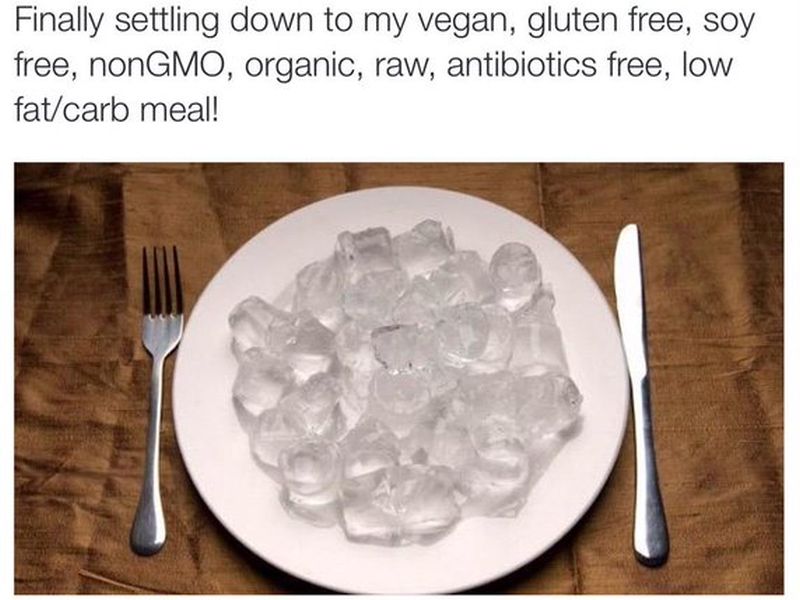
Most trainers are going to answer this in one of two ways:
- You should just focus on “eating clean” and you’ll be fine.
- You should follow a fad diet such as Paleo, gluten-free, or low-carb.
And if you’re really unlucky, he’ll want to toss you into the deep, dark depths of dietary hell…
Here’s the rub:
“Clean” eating and fad dieting guarantee little in the way of fat loss or muscle gain.
The truth is you can be the healthiest or most Paleolithic or carb-o-phobic eater in the world and still be weak and skinny fat.
Why?
Because, when it comes to body composition (how much muscle and body fat you have), how much you eat is more important than what.
Claiming that one food is “better” than another for losing or gaining weight misses the forest for the trees.
Foods don’t have any special properties that make them better or worse for weight loss or weight gain.
What they do have, however, are varying amounts of potential energy, as measured in calories, and various macronutrient profiles.
These two factors are what make certain foods more conducive to weight loss or gain than others.
Generally speaking, foods that are “good” for weight loss are those that are relatively low in calories but high in volume (and thus satiating).
Examples of such foods are lean meats, whole grains, many fruits and vegetables, and low-fat dairy products.
These types of foods also provide an abundance of micronutrients, which is especially important when your calories are lower than normal.
Foods conducive to weight gain are the opposite: high in calories and lower in volume and satiety.
These foods include the obvious like caloric beverages, snack foods, fast food, candy, and other sugar-laden goodies, but quite a few “healthy” foods fall into this category as well, such as:
- Oils
- Nuts
- Fatty meat
- Butter
- Low-fiber fruits
- Whole fat dairy products
- Avocado
Now, that doesn’t mean you can’t lose weight eating foods conducive to weight gain. It can just make the experience more trying.
A rather extreme example of this is a simple experiment carried out by Professor Mark Haub from Kansas University.
Mr. Haub lost 27 pounds in 2 months on a diet of protein shakes, Twinkies, Doritos, Oreos, and Little Debbie snacks, and you could do exactly the same if you wanted to (not that you should, though).
Think of it this way:
You can only “afford” so many calories every day, whether dieting to lose fat or gain muscle, and you have to watch how you “spend” them.
When you want to lose weight, you want to spend the majority of your calories on foods that allow you to hit your daily calorie and macronutrient targets without struggling with hunger and cravings.
When you want to gain weight, however, you have quite a few more calories to spend every day. And that means you can “afford” to eat a much wider variety of foods.
That said, I don’t recommend you join the hordes of radical “IIFYMers” that are on a quest to get shredded eating as much processed junk food as possible.
Remember that our bodies need more than just protein, carbs, and fat to function properly.
They also need an assortment of vitamins, minerals, and other nutrients that we can only get from relatively unprocessed foods like fruits and vegetables.
Here’s a good rule of thumb (and the type of answer you want to hear in response to this section’s question):
If you eat enough protein and get the majority (~80%) of your calories from relatively unprocessed, nutrient-dense foods, you can fill the remaining 20% with indulgences.
Check out this article if you want to learn more about creating healthy meal plans with this style of dieting.
3. What Type of Workouts Would You Have Me Do?
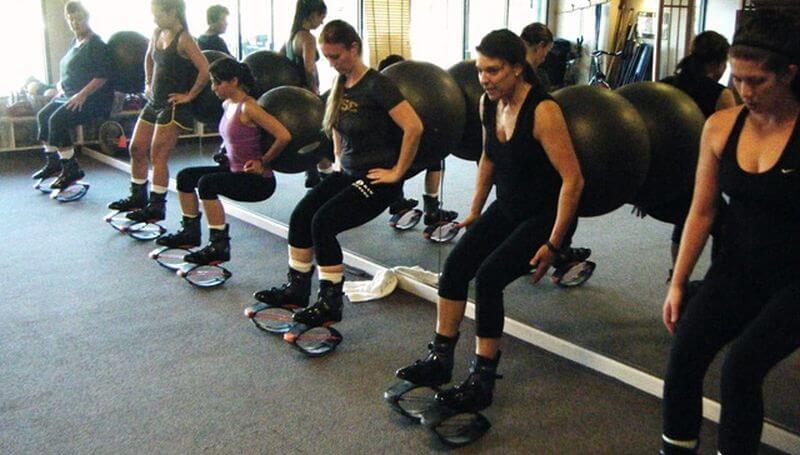
If you’re like most people, you’re looking for a trainer for one simple reason:
You want to lose some fat and gain some muscle.
You might think of it in different terms–“shifting fat,” “toning,” “turning fat into muscle,” and so forth–but it all boils down to increasing muscle mass and reducing fat mass.
And that applies equally to men and women.
This is no surprise to most guys, but if you’re a woman that’s afraid to do anything that involves “gaining,” I understand.
Unfortunately, the mainstream channels of fitness advice have brainwashed women into believing the endgame is weighing as little as possible.
This is why so many women fall prey to starvation diets, “detox” cleanses, grueling cardio routines, and other non-optimum methods of losing weight.
The reality, though, is your weight doesn’t matter nearly as much as your body composition.
“Weight” isn’t a good metric for assessing the gap between your current physique and your goal. It’s hard to guess what your ideal weight will be.
Much better metrics are body fat percentage and total lean mass.
Let me show you want I mean. Check out the following pictures.
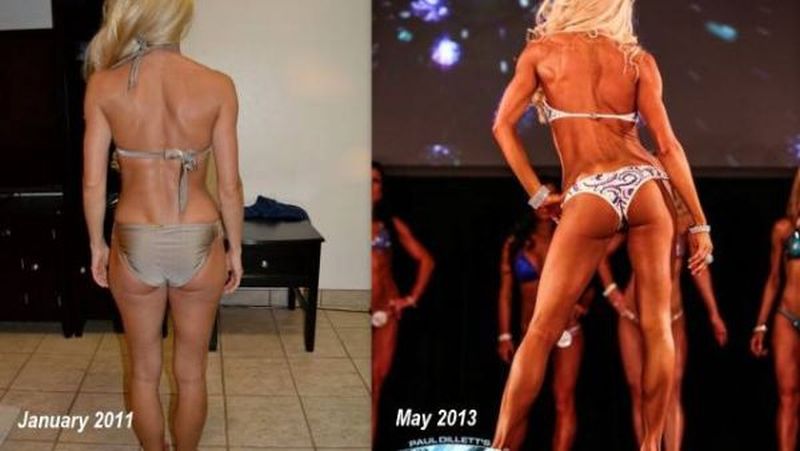
Can you guess her weight in each of these pictures?
Well, if you guessed “the same,” you win the Internet.
That’s the power of losing fat and adding muscle, not just “losing weight.”
And just to put this transformation in perspective, it required losing about 15 pounds of fat and “replacing” it with about 15 pounds of muscle.
So, with all that in mind, what workouts do you think you should be doing?
Ones that help you build muscle and lose fat as quickly as possible, right?
And what kinds of workouts are those?
They emphasize heavy, compound weightlifting.
Many people think that weightlifting–and heavy weightlifting in particular–is for gaining size, not losing fat, but they’re wrong.
In fact, the opposite is true–this style of training can not only help you lose fat faster but preserve (or even build) muscle as well.
Many people also think that low-weight, high-rep training is optimal for muscle gain or at least equally effective as high-weight, low-rep training.
This too is wrong, and I break down why here.
They are relatively short (45 to 65 minutes).
There’s no need to spend a couple of hours in the gym every day.
This isn’t just hugely impractical–it can even be counter-productive and hinder your progress.
They are programmed intelligently.
There are many workable ways to program workout routines, but there are certain non-negotiable principles that must be observed.
For example, there’s currently a lot of debate about how frequently you should train a muscle group.
Some people think it’s black and white:
If you’re not training major muscle groups 2 to 3 times per week, they say, you’re not going to get very far, they say.
This type of simplistic one-liner is good for snaps but misses a vital realty:
How frequently you can and should train each muscle group depends on the intensity (weight used in terms of % of 1RM) and volume (total number of reps performed) of your individual workouts.
You see, the higher the volume and intensity of your individual workouts, the less frequently you can do them.
So sure, you can squat or bench press three times per week…but you can’t do 10 heavy sets per workout.
This is why popular strength programs look so austere compared to the nonsense you find in most bodybuilding magazines.
This brings us to the next point:
A well-designed workout program not only emphasizes heavy, compound weightlifting for each major muscle group; it puts you in a “sweet spot” in terms of total weekly volume as well.
How you reach that volume in terms of number of workouts–one, two, three, etc.–is of secondary importance.
What is that sweet spot, though?
Well, there aren’t any studies that give a definitive, one-size-fits-all answer as to how hard and how much you can train to maximize your results, and there many never be.
Optimal volume is modified by intensity, as you know, but there are many other factors that come into play as well including diet, training experience, sleep hygiene, genetics, and more.
That said, there is enough clinical and anecdotal evidence available to derive some sensible guidelines.
Let’s first look at a large and extensive review of weightlifting studies conducted by scientists at Goteborg University.
Their research found that, when using weights in the 60 to 85% of 1RM range, optimal volume appears to be in the range of 30 to 60 reps per major muscle group per workout when 2 to 3 workouts were performed each week.
Thus, a total weekly volume of somewhere between 60 and 180 reps per major muscle group.
As you can guess, the heavier the training, the fewer reps you can and should do every week.
If you were training exclusively in the 80 to 85% of 1RM range, like you do on my Bigger Leaner Stronger program, you’d want to be around 60 to 80 total reps per major muscle group per week.
If you were doing a low-weight, high-volume type of program, however, you’d want your weekly volume for each major muscle group to be closer to 180 reps.
And if you were doing something in between, like my Thinner Leaner Stronger program for women, your total weekly reps would be somewhere in between as well.
These findings also agree with another large review conducted by researchers at Arizona State University, which found that when lighter weights are used, more sets per week is optimal. As the weights get heavier, however, total sets must come down.
So, when you ask what types of workouts the trainer would have you do, you want to hear something along the following lines:
- A focus on heavy, compound weightlifting.
- More free weights than machines.
- Relatively short workouts of about an hour.
- Moderate weekly volume of 60 to 120 heavy reps per week per major muscle group (as modified by intensity, and regardless of frequency).
4. What Should I Do For Cardio?

Years ago, I asked a trainer how to get below 10% body fat.
“Do a shitload of cardio” was his reply, and a shitload of cardio I did.
I walked, swam, biked, and ran…and still struggled to break into the “single-digit club.”
Well, I’ve since learned why.
First, I didn’t understand how to diet properly, which we’ve already discussed.
Second, I didn’t realize how little cardio impacts fat loss.
Simply doing cardio guarantees little in the way of weight loss (even when you do quite a bit).
In fact, research shows that you can just wind up fatter as a result, mainly by negating its already meager weight loss benefits by unconsciously eating too much and/or reducing other forms of physical activity.
Hence the throngs of overweight people in your gym crowding the treadmills, wondering why they’re still not losing weight.
This is why I suggest that you ask your prospective trainer for his cardio recommendations.
And the type of answer you want is a question: what are your goals?
When managed properly, cardio can improve your health, help you lose fat faster, and even help you build muscle.
But when it’s taken too far, it can do the opposite: impair health, make weight loss more of an ordeal, and negatively impact body composition.
For example…
- Research shows that endurance athletes are at a higher risk of heart dysfunction than the general, non-running public, and that the older they get and the more miles they log, the worse the problem gets.
- Research shows that marathoners develop more arterial plaque than sedentary non-runners, which increases the risk of stroke and dementia.
- The more cardio you do, the more you stress your body. If taken too far, you can wind up in a state wherein your body can’t adequately recover from your workouts.
- Hang around dyed-in-the-wool endurance athletes for a bit and you’ll quickly notice how many have serious joint problems.
While it’s sensationalistic to say doing too much cardio can kill you, it’s not completely untrue.
The reality is if your goal is to look and feel great, more cardio (and exercise in general) is not always better.
That’s why my general cardio recommendation is this:
You should do as much cardio as it takes to achieve your goals and no more, and it shouldn’t be so much that it significantly impairs your physical performance, recovery, or health.
For most people (myself included), that amounts to 1 to 2 hours of high-intensity interval training per week with maybe another hour or two of walking as well.
5. What Supplements Should I Take?
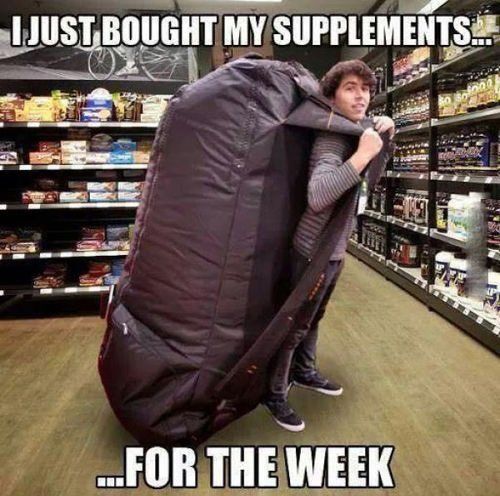
I’ve noticed that, for whatever reason, trainers tend to fall on opposite ends of the spectrum with supplementation.
They either gush about supplements and have a litany of suggestions or reject them as a waste of money to be avoided altogether.
Well, the truth is this:
Supplements don’t build great physiques. Dedication to proper training and nutrition does.
Unfortunately, the workout supplement industry is plagued by pseudoscience, ridiculous hype, misleading advertising and endorsements, products full of junk ingredients, underdosing key ingredients, and many other shenanigans.
Most supplement companies produce cheap, junk products and try to dazzle you with ridiculous marketing claims, high-profile (and very expensive) endorsements, pseudo-scientific babble, fancy-sounding proprietary blends, and flashy packaging.
So, while workout supplements don’t play a vital role in building muscle and losing fat, and many are a complete waste of money…the right ones can help.
There are safe, natural substances that have been scientifically proven to deliver benefits such as increased strength, muscle endurance and growth, fat loss, and more.
As a part of my work, it’s been my job to know what these substances are, and find products with them that I can use myself and recommend to others.
Finding high-quality, effective, and fairly priced products has always been a struggle, though.
That’s why I took matters into my own hands and decided to create my own supplements. And not just another line of “me too” supplements–the exact formulations I myself have always wanted and wished others would create.
I won’t go into a whole spiel here though. If you want to learn more about my supplement line, check this out.
Now, the type of answer that you want to get to this section’s question is familiar: what are your goals?
- If you want to optimize health, then you should consider a well-formulated multivitamin, greens supplement, and fish oil.
- If you want to maximize muscle growth, then you should consider a protein powder, pre-workout supplement, and post-workout supplement.
- If you want to lose fat faster, then you should consider a fat burner (and pre-workout fat burner in particular).
- Other notable mentions are a natural sleep supplement to improve the quality of your rest and a joint supplement to reduce inflammation and prevent cartilage loss.
And the final option of taking no supplements whatsoever is also completely acceptable. They don’t make or break your efforts.
If you want to dive into the details and learn more about the many types of supplements out there, check out this article.
The Bottom Line on Personal Trainers

I hope you don’t feel I’ve been too harsh on trainers in this article.
I’m not one for trying to gain attention through bullying or muckraking.
I would, however, like to see more people find their way to honest, knowledgeable trainers that get results. In this way, the entire profession can be elevated in time.
So, if you’re currently looking for a trainer or plan on starting your search soon, I hope this article will help you land in good hands.
Good luck!
What’s your take on personal trainers? Have anything else to share? Let me know in the comments below!
Scientific References +
- Quinn, T. J., Sprague, H. A., van Huss, W. D., & Olson, H. W. (1990). Caloric expenditure, life status, and disease in former male athletes and non-athletes. Medicine and Science in Sports and Exercise, 22(6), 742–746. https://doi.org/10.1249/00005768-199012000-00002
- Duca, L., Da Ponte, A., Cozzi, M., Carbone, A., Pomati, M., Nava, I., Cappellini, M. D., & Fiorelli, G. (2006). Changes in erythropoiesis, iron metabolism and oxidative stress after half-marathon. Internal and Emergency Medicine, 1(1), 30–34. https://doi.org/10.1007/BF02934717
- Bos, D., Ikram, M. A., Elias-Smale, S. E., Krestin, G. P., Hofman, A., Witteman, J. C. M., Van Der Lugt, A., & Vernooij, M. W. (2011). Calcification in major vessel beds relates to vascular brain disease. Arteriosclerosis, Thrombosis, and Vascular Biology, 31(10), 2331–2337. https://doi.org/10.1161/ATVBAHA.111.232728
- Mont, L., Tamborero, D., Elosua, R., Molina, I., Coll-Vinent, B., Sitges, M., Vidal, B., Scalise, A., Tejeira, A., Berruezo, A., & Brugada, J. (2008). Physical activity, height, and left atrial size are independent risk factors for lone atrial fibrillation in middle-aged healthy individuals. Europace, 10(1), 15–20. https://doi.org/10.1093/europace/eum263
- Abdulla, J., & Nielsen, J. R. (2009). Is the risk of atrial fibrillation higher in athletes than in the general population? A systematic review and meta-analysis. Europace, 11(9), 1156–1159. https://doi.org/10.1093/europace/eup197
- Melanson, E. L., Keadle, S. K., Donnelly, J. E., Braun, B., & King, N. A. (2013). Resistance to exercise-induced weight loss: Compensatory behavioral adaptations. Medicine and Science in Sports and Exercise, 45(8), 1600–1609. https://doi.org/10.1249/MSS.0b013e31828ba942
- Sawyer, B. J., Bhammar, D. M., Angadi, S. S., Ryan, D. M., Ryder, J. R., Sussman, E. J., Bertmann, F. M. W., & Gaesser, G. A. (2015). Predictors of fat mass changes in response to aerobic exercise training in women. Journal of Strength and Conditioning Research, 29(2), 297–304. https://doi.org/10.1519/JSC.0000000000000726
- Peterson, M. D., Rhea, M. R., & Alvar, B. A. (2005). Applications of the dose-response for muscular strength development: A review of meta-analytic efficacy and reliability for designing training prescription. Journal of Strength and Conditioning Research, 19(4), 950–958. https://doi.org/10.1519/R-16874.1
- Wernbom, M., Augustsson, J., & Thomeé, R. (2007). The influence of frequency, intensity, volume and mode of strength training on whole muscle cross-sectional area in humans. In Sports Medicine (Vol. 37, Issue 3, pp. 225–264). Sports Med. https://doi.org/10.2165/00007256-200737030-00004
- Robbins, D. W., Marshall, P. W. M., & McEwen, M. (2012). The effect of training volume on lower-body strength. Journal of Strength and Conditioning Research, 26(1), 34–39. https://doi.org/10.1519/JSC.0b013e31821d5cc4
- Wooley, S. C. (1972). Physiologic versus cognitive factors in short term food regulation in the obese and nonobese. Psychosomatic Medicine, 34(1), 62–68. https://doi.org/10.1097/00006842-197201000-00007










